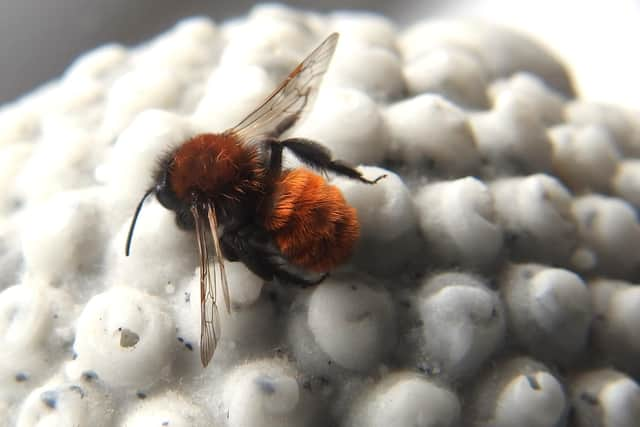On the Wildside: Delicate tawny mining bee is a solitary species
and live on Freeview channel 276
For nesting sites, the female seeks out sunny, sandy banks or even lawns if they are not too heavily overgrown. Here, they become obvious with their pile of sand grains like a small volcano and an access hole where the crater might be. The nests are to be found in short turf or flowerbeds in gardens and parks, in sunny, mown banks, field margins in farmland, and in orchards. The female mining bee is quite distinctive with a russet-coloured, hairy thorax, and a broad abdomen covered in golden hairs. The male is rather smaller and pretty much non-descript.
These are spring-flying bees which emerge to be on the wing from April to June. This period of activity is when fruit trees such as cherry, pear, and apple are in flower to provide abundant pollen and nectar. These energy-rich foods are collected by the female and taken back to the nest to provide for the larvae as they develop underground with each one in an individual ‘cell’. Here they grow and metamorphose after hibernating as pupae over the winter period. Solitary bees and also many solitary wasps, and insects like hoverflies for example, are important pollinators for many plants, including crops that are economically important to us such as fruit trees. Although they are widespread in England and Wales, these insects are less common in Scotland.
Advertisement
Hide AdAdvertisement
Hide AdAnother denizen of gardens but later in the year, is the leafcutter bee. This is also a very obvious species to spot as they fly through the air carrying neatly incised pieces of green-leaf with which to construct its nest. This bee freely takes to nesting in bug-boxes.


Professor Ian D. Rotherham, researcher, writer & broadcaster, is contactable on [email protected]; follow Ian’s blog (https://ianswalkonthewildside.wordpress.com/) and Twitter @IanThewildside